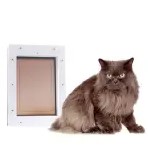To get a warmer, high-performance home, the first thing people think of is increasing the amount of insulation. Thicker insulation than Building Code minimum is important. However, did you know that insulation must also be continuous to be truly effective?
Gaps in insulation are like gaps in your ski suit when you’re on the slopes. Cold comes in and your heat goes out. And, like a lovely cosy ski suit, the thing with thicker insulation is that heat goes out gaps even faster because you’re warmer inside.
In addition to the discomfort and higher bills, the trouble with heat leaving your home through gaps in the insulation is that you get a cold spot in the structure. Cold spots are where condensation can form and over time mould will grow.
This often happens in places in the building structure where you can’t see it – until it becomes a major issue, that is. And by then it could be affecting your health and the durability of your house.
Where insulation is left out is one type of gap, the other type of gap is where a solid material goes through the insulation – like the edge of a concrete slab. This is a “thermal bridge” or “cold bridge” – where a material that conducts heat bridges between the warm cosy inside and the cold outside. (Read more on thermal bridging here.) Literal gaps in the construction where cold draughts come in is another kind. (Read more about draught-free construction here.)
If you already have a design, the easiest way to check if your home is designed for the insulation to be continuous is to use a red pen to draw over the plans and sections from your architect or designer. Or ask them to. The red line of insulation should be a continuous loop in any drawing. High-performance windows and doors are part of the insulation line.
If it’s not continuous, you should ask why and insist it gets corrected. You’ve got to get it right at the design stage to have any chance of it getting built right.
You might need to educate your Architect or designer if they aren’t familiar with high-performance design.
This is one of the topics, I often find myself discussing during an Expert Consultation where we review your project feasibility together. An Expert Consultation is the ideal first step towards commissioning me as your architect or engaging me as your specialist consultant (or Passive House designer) for the high-performance aspects of your design if you’re already working with an architect or designer. It’s a straightforward service for a very reasonable fixed price. All the detail are here.

A continuous (red) line of insulation ensures a high-performance outcome. (c) VIA architecture
Can you get a Passive House Cat Door?
Prospective Passive House homeowners often have a lot of questions. And rightly so, there are many new things to know about designing, building and living in a Passive House compared to a typical Kiwi house.
One regular question is: can we get a Passive House Cat Door?
The answer is: Yes
 There is this very high-tech option from petWALK in Austria. It is designed for use in airtight, houses with controlled ventilation, such as a Passive House. It comes in a variety of sizes, colours, designs and with numerous accessories. It is suitable for both cats and dogs, installation in solid walls, glass, doors.
There is this very high-tech option from petWALK in Austria. It is designed for use in airtight, houses with controlled ventilation, such as a Passive House. It comes in a variety of sizes, colours, designs and with numerous accessories. It is suitable for both cats and dogs, installation in solid walls, glass, doors.
Price tag: starting around USD $2,000 with many more expensive options (depending on the option chosen and shipping)
 There is also this more basic options from Freedom Pet Pass in the United States. Which, although it seems very basic and would need checking on a specific Passive House design, has been used for a Passive House in the US. There are 3 cat sizes and also options suitable for dogs.
There is also this more basic options from Freedom Pet Pass in the United States. Which, although it seems very basic and would need checking on a specific Passive House design, has been used for a Passive House in the US. There are 3 cat sizes and also options suitable for dogs.
Price tag: USD $239 – $359 (depending on the option chosen and shipping)
So a Passive House Cat Door (or Cat Flap) does come with a relatively hefty price tag.
Still, maybe your favourite moggy (or doggy) is worth it?
Do you have a question about Passive House? Please get in touch and ask away.











